
Special issue: “Darkness matters”
Authors
Camilla Eline Andersen, camilla.andersen@inn.no, Inland Norway University of Applied Sciences
Hanna Ellen Guttorm, hanna-ellen.guttorm@samiskhs.no, Sámi University College
Mirka Koro-Ljungberg, Mirka.Koro-Ljungberg@asu.edu, Arizona State University
Teija Löytönen, teija.loytonen@aalto.fi, Aalto University
Jayne Osgood, j.osgood@mdx.ac.uk, Middlesex University
Ann Merete Otterstad, ann.otterstad@hioa.no, Oslo and Akershus University College of Applied Sciences
Teija Rantala, teija.rantala@helsinki.fi, University of Helsinki
Pauliina Rautio, pauliina.rautio@oulu.fi, University of Oulu
Anita Välimäki, anita.valkeemaki@uniarts.fi, The University of the Arts Helsinki
Contents
NOVEMBERY FOREST
Pimeyden metodologiat
In the Forest
Writing ‘in the dark’
DARKNESS
Thresholds: Seeing-imagining spatial relational soulbodies …who has just replaced significations, identification, knowing, forest of infinite sound series, writing self-monsters & labyrinths of earing-knowledgeablebeing-language-writtensomaticsounds…and and and…
ECHOES FROM THE FOREST
A sort of response
What might scholarship look like in the absence of clear views, without a need to signify and identify, or to declare strangeness only in the relation to the familiar?
THE CONCEPTUAL-METHODOLOGICAL FOREST (HOW DOES THIS ‘MATTER’?)
NOVEMBERY FOREST
“Our fantastic civilization has fallen out of touch with many aspects of nature, and with none more completely that with the night. Primitive folk, gathered at a cave mouth round a fire, do not fear night; they fear, rather, the energies and creatures to whom night gives power; we of the age of the machines, having delivered ourselves of nocturnal enemies, now have a dislike of night itself. With lights and ever more lights, we drive the holiness and beauty of night back to the forests…”
“By day, space is one with the earth and with man – it is his sun that is shining, his clouds that are floating past; at night, the space is his no more…”
-Henry Beston: The Outermost House (2003, 165, 173)
Pimeyden metodologiat
This special issue is based on an experimental weekend workshop: “Methodologies of Darkness” held around the darkest time of the year, the end of November, in 2015 in Nokia, Finland. For this event scholars from a variety of disciplines, however all connected to education, were gathered to engage with darkness in a forest without knowing what this might produce or create. We were gathered to re-educate ourselves and to disrupt methodological habits that we might perform, that perform us, and that perform educational research. Further, we deliberately wanted to unsettle notions of methodology as a process where the eyes have signified what Haraway writes of as a ‘perverse capacity’ that has distanced the knowing subject from everything around in an ‘interest of unfettered power’ (2002, p. 677). Finally, yet importantly, we were gathered to collaboratively experiment with ways of knowing and sensing in the dark.
As researchers of the world we do not see ourselves as separated from various habitual research practices in educational research that we find problematic or poor, yet this recognition of habitual performances does not solely overwhelm us. Instead, we think of it as a productive and creative force in relation to research methodologies in the educational landscape. It produces creativity; a becoming-creative. Hence, to initiate an unsettling of methodology, the promoters (three of the participants) of the workshop suggested an engagement with the potentially unobvious: darkness. That is to collectively submerge ourselves with darkness as a co-productive force in changing our habitual ‘onto-episte-methodological practices’ (Koro-Ljungberg, 2016, p. 1) where as Haraway suggests, the eye has signified a deviant capacity. Our objective was to unlearn oculocentrism and anthropocentrism in our practices of doing research - to unsettle the hegemony of the ‘eye’ and the ‘human’. We think we got somewhere, but perhaps not very far at all - the eyes of the human are still very present in this issue. We invite the reader to evaluate and critically address how well we succeeded. The journey of unlearning continues for us.
Eight scholars met in a house in Nokia, Finland, in November 2015. A house within walking distance to a forest where we had planned to engage with/in, during the night. A key question guided our experimentation: What will happen to our understanding of qualitative methodologies, to us, theories, senses, and to our material connections in a dark Atumnforest? All having been troubled by and/or hopeful of the ontological turn and the push towards performing research differently, especially within qualitative methodologies, we were eager to collectively practice thinking-doing in a dark forest where losing control through lessening the significance of the eye was considered productive - at least in comparison with our own earlier works.
We wished to create new research practices for ourselves, that in a larger sense could do justice to “what is” and work more actively with “what might be”. Further, we encountered the, perhaps odd, prospect of thinking about qualitative methodologies with trees, moss, forest animals, and wet grass - in relation to darkness. With Deleuze (1995) we were gathered to ‘precipitate’ methodological events in a dark forest that might ‘elude control’ and most importantly ‘engender new space-times’ (p. 176). Another important underlying assumption for our experimental workshop was that methodology and politics are inseparable, and further that experimentation with darkness might turn the common space of research methodology into smooth and virtual time-spaces where events are privileged rather than formed and perceived things (Deleuze & Guattari, 1987).
During the prelude to the workshop a Finnish translation of methodologies of darkness was circulated through email; pimeyden metodologiat. This concept seemed to energize our curiosity for what a dark Autumn forest might do to qualitative methodologies: What might darkness do to our notions of research methodology? What might our new research methodologies be like? Darkness was a phenomenon none of us had engaged extensively with before, although we realized it is an ancient construct as well as a source of creativity and inspiration. We had not collectively discussed what darkness (and light) might do to our notions of research methodology before meeting up. We were nevertheless all curious, and this curiosity seemed to help us overcome the more rational questions and thoughts that habitually seem to be produced when a phenomenon we “know” so well, like methodology, is connected to a milieu or territory that we have never worked with as a methodological matter.
Prior to the event the scholars who had signed up for the workshop, were asked to read three texts: The Abyss: A novel (Yourcenar, 1968), Night and Shadows (Macauley, 2009) and Seeing Dark Things. The Philosophy of Shadows (Aranyosi, 2008). The participants were also asked to prepare and lead a forest activity, no time or space boundaries given. There were no further instructions or planning, except to remember flashlights, warm boots and warm outdoor clothes. Hence, our workshop followed Gilles Deleuze’s idea of experiment as the way to approach scientific questions and phenomena: “Never interpret; experience, experiment” (Deleuze 1995, p. 87). Rather than thinking and imagining darkness, we set out to experience it for ourselves by arranging an evening in a dark forest, with planned, semi-planned and spontaneous experiments to help us think about methodologies, literally in the dark.
The authors of this special issue comprise most of the people from the weekend workshop as well as a few who were invited but could not make it - thus exploring as if ‘in the dark’ the question of what darkness does to research methodology. The issue is made up of what emerged as a consequence of us, as a collective, actively morphing with darkness before, during and after the workshop. In addition, the form of the special issue seeks resonance with the forest engagements; hence, the issue will present emerging compositions of written, visual, and audio reports of these engagements. The objective of the special issue, based on the experimental workshop, is to reconceptualise existing ways of doing educational research by deliberately inducing a concrete challenge in our research activities: darkness, or a much-hindered sense of sight/light. With darkness, we aimed at crafting research practices that not only undo binaries but confuse, scramble and even frighten our binary-seeking minds. And then paying attention to the affects that this created. It is this, that in various ways, is presented as thresholds without clarity. To help a reader follow our experimenting process more easily we will now say something more about what happened in the dark forest and in the following process.
In the Forest
As explained, invited participants were asked to prepare an exercise beforehand that would be brought to the dark Novembery forest. These were introduced during the late evening darkness event when we had been walking for a while with and without flashlights on, had experimented with sounds and found objects in an outdoor amphitheater that we stumbled over, and had found an area in the forest that we collectively agreed on to engage with/in. There was no pre-decided order of the exercises, and none of us knew what others had brought. Neither was there any time schedule. The duration of each exercise emerged with the doing and experimenting.
The activities were not unlike those some early childhood educators who bring children to forests might plan. In the process of unlearning and relearning our research practices, we took each other to the forest in a way that we know children are typically taken. The activities we had prepared for each other included diverse multisensory ways of engaging with darkness (and sometimes light) and the forest. For instance, we were all asked to choose something from where we were sitting/standing amid trees, moss, ling, branches, smells, silence, darkness, wet organic materials etc. We were further asked to name this something, to bodily get to know it and finally to celebrate it. This was not collectively shared afterwards. A second example is that we were all asked to move in three different experimental ways with/in the forest. A third example is a sudden becoming-horse-like pop-up happening (see photo below). One of the participants surprisingly put on a horsehead and moved carefully, quiet and slowly with/in the forest for a while.
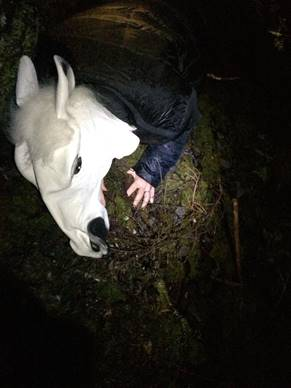
A fourth example is an exercise where we were asked to experiment with our mobile-cameras in the dark forest (see three photos below). A silent experimentation with darkness and light and branches and lichen and decaying wood and distance and more emerged.
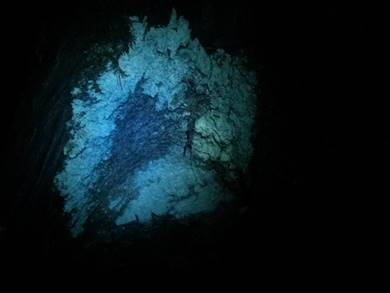
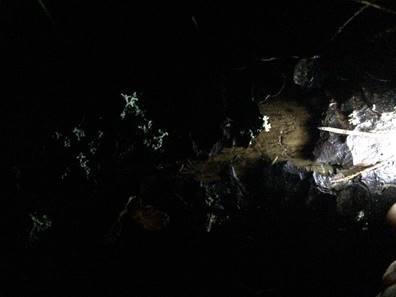
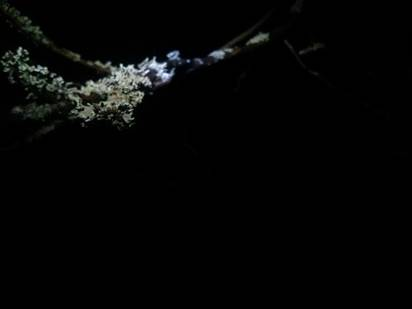
Immediate discussion and sharing followed the darkness event. Gathered around a table inside the house we talked about what had happened to each of us and to our thinking. What had been produced and what might be creative in terms of research methodologies? From these initial articulations, presented in a stream of words below, a direction and a form for a special issue began to take form.
Rather than hiding the context, darkness produces a heightened presence/intensity of it (the forest, us in the forest). The context appears to exist before us as the individuals in it: the context swallows and envelops us, thus forming as if a negative image of the usual research situation where individuals shine and stand out. Without seeing properly, other senses and imagination begin to compensate and become heightened. Rather than seeing-identifying, we are seeing-imagining. Rather than aiming to produce knowledge through (experience of) signification we are immersed in the sounds, the smells, the movements (of trees, air, moss, animals, rain) in the production of the context itself. The ways in which ‘knowledge’ is produced (what knowledge is to begin with) become to rely on these stand-ins for sight/light. It is hard to let go of the pressure to recognize, to give meaning and to define. And we don’t wholly let go either – recognizing just alters its form. We notice that we slow down physically (heart rate, pace of walking, breathing) and seek refuge in anything we can grab onto, lean against or sit on and become alerted somatically. All of our experiments are subtle and aware, and serious if not gloomy or even sinister, our voices low and movements deliberate. Methodology of darkness appears as if contrasting methodologies are at work in light. But not by forming a polar opposite, rather darkness becomes about that which is missing: light and seeing, but generating these as wholly different experiences. Light is gradations of darkness.
The discussions and sharing continued the day after and we talked in more detail about how to create a special issue from the “Methodologies of Darkness” experimental weekend workshop. Elements of the process towards a special issue is what we aim to present below.
Writing ‘in the dark’
Deleuze and Guattari (1987) insist that writing has to do with ‘mapping, even realms yet to come’ (p. 5). With this in mind, with our collective bodily knowledge of what writing might do and with our interest in the new, we decided to create a special issue as an active way of continuing to elude control and engender new time-spaces in relation to methodologies in educational research. We planned that each of us were to create something; a piece, that would be a continuation of the production of lesser blocked ‘arrangements of desire’ (Marks, 1998, p. 118) in relation to methodologies. This we hoped could fuel the always-already process of unsettling methodology as we know it. Further, to challenge the common article format in most journals we decided to create a single piece instead of separate pieces or articles. This larger piece should consist of collectively created smaller pieces. We agreed on a few guidelines before the workshop ended:
Composing is done with self-induced blindness (not entirely seeing what others are writing) and as a negation of a special issue: what is usually highlighted is partially omitted; and what is usually not seen/done we highlight, including but not limited to:
- Writing without seeing what others write
- Writing a single piece rather than separate articles
- Black page and white text
- Some parts in audio (cannot be read as text but has to be listened to)
- Some passages can be in the authors’ (non-English) native languages
As a place to revisit the darkness “Methodologies of Darkness” experimental weekend event while writing/creating, we created a shared Dropbox folder where each participant could upload photos, sounds and videos produced during the workshop. Hence, all of us had access to all the materials produced while working more separately (and not). However, to ensure a more collective process for each piece an elaborate scheme for writing was set up. This scheme formed a constellation of interwoven loops that formed an ongoing chain: everyone was instructed to create an initial piece (of text, sound, images, anything) and send a part of this as a short provocation to a named fellow author (without sending the entire piece). For example, we could send forward the last two written sentences of our piece, or a figure, a quotation, a sound, a number, an image; anything. Each of us would, after receiving a provocation, continue to create a full piece with this little extra spark in the darkness. The full pieces were ultimately sent to us as the editors. We then uploaded the “full” pieces into the shared Dropbox folder leaving the name of the creators out. Then we began to work with how to create an issue that would reflect and convey the idea of a dark forest. Yet something that could be presented in a scholarly journal.
A few of the initial experimenters, both those who were present in the dark forest and those who contributed as if ‘in the dark’ and hence absent-present in the Novembery night, met after three months at a conference to work collectively with what each had composed, and to specifically share what had happened after the dark forest workshop, during and after the writing/creating processes. Practices, ideas and theories were shared. We talked about how we had worked with our pieces, and what this had done to us. About what had happened when a provocative sparkle was received. About how it was to create a piece when not having been in the forest. We discussed philosophical concepts and theories that might help us write something about the whole event and what it might do to our future research practices. The special issue editors, again took over and continued these discussions through Skype-meetings and emails. We aimed at reassembling, composing and working with the pieces in a way that we could create a complexly interwoven yet coherent special issue. In a form which would still resonate with a night in a dark, rainy forest.
Here are a few initial provocations:
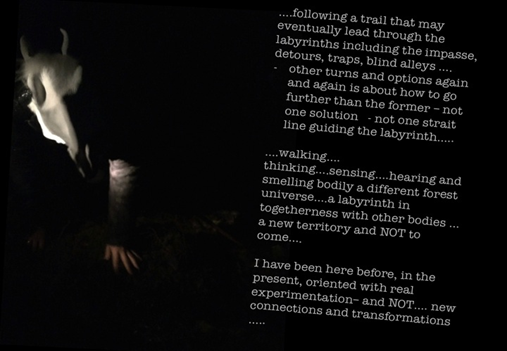
Differences: https://youtu.be/_ofEd0l-rto
Soundfile : The production of differences [echoing sound]
being in the in-betweenness
of major-scientific-language and becoming-minor-language
as politics
might be that of hinging on to the production of differences
love duration through ‘philosophical intuition’ (Grosz, 2005)
strive to become pregnant with other realities
Every author understood the complicated and multifaceted instructions for writing, differently. First, this caused frustration and confusion, which after a while turned into delight through the realization that if the plan had unfolded perfectly it would have diminished the creative diversity of writing. Furthermore, and in retrospect, confusions and misunderstandings reflected perfectly the idea of writing and thinking in the dark - when clarity is something you imagine, each a little differently. Despite the darkness of the singular productions, sharing the event, senses of the dark forest and the pieces in the processes with one another made the scrambled materials turn into a collective special issue. These pieces share the sparks from the dark forest.
The process of the experimentation as well as writing about it has been layered and segmented in so many ways – both deliberately and accidentally - hence the notion of authorship or perhaps ownership remains dim to say the least. However, as we came closer to publishing the special issue, we decided to create two versions of the issue. One with this editorial and all the pieces put together as one larger piece, and where we all are named as authors. And another version where each piece has an author. This is our way to work with and against publishing systems and to support those of us early in our academic careers.
The challenge has not only been in experimenting and thinking ‘in the dark’ but also attempting to convey multiplicity in the spacetimematterings (Barad, 2007) we had engaged with; to make the reader sense the dark and wintery Finnish forest and the sensations the authors experienced that night. We hope that through these pieces and productions, and their leakages and reproductions, the reader can sense the darkness that enabled us to enter and produce from within it. This piece/publication reaches out to the (s)pace known and unknown, to the way of being, experiencing and expressing the ‘undeniable darkness’ which we understood ourselves to inhabit, but which allows us let go of ‘known’ strategies and create ways of experimenting with the smooth and striated (s)paces of the darkness...
This issue has three interwoven and iterative, non-linear sections which give the reader a choice of freely jumping from one section to another. This said, the issue has been organized with the following patterns and intentions in mind. Firstly, the experiments and the works generated from them are introduced to stress the experimental nature of this work and the ethics involved in experimental research. This is entitled “Novembery forest”. Secondly, collectively made works between two participants are presented to function as thresholds to the experiment. These thresholds demonstrate sensory productions and depict the processuality of this experiment: the materials produced in and after the night in the forest are evolving and produce something different each time they are worked on. These written and recorded pieces were always producing a novel arrangement each time they were worked on. This part is entitled “Darkness”. Thirdly, responses under the title “Echoes from the forest” are set out from two participants after working together to produce pieces on the experiment. Fourth, the issue concludes with a ‘beginning’ in the form of questions on the matter of darkness and light, apparatuses and mattering methodologies. This was written by the editors and entitled “Will the Novembery forest insert itself?”.
DARKNESS
Soulbodies lived

Soulbodies
-immaterialbodies-
spiritualbodies-mindbodies-
soulconstructions-
soulparts-soulmachines-
personificationassemblages
-and
Note: This section displays a textual/visual experiment which asks readers to get lost and confused as many ways as possible. This experiment also contains spaces where readers can add their own locally and historically situated formations of soulbodies.
-nomadic objects/forest explorers- one-as-many- seeing and
being seen- soulbodies- series of ideas-
infinite series of forest matter
series of infinite forest matter
matter of infinite forest series
forest of infinite series
"Ideas are concrete universals in
which extensions and
comprehensions go together – not
only because they include variety or
multiplicity in themselves, but
because they include singularity in
all its varieties"
(Deleuze, 1994, p. 176).
Forest inquiries can take human forms. Forest inquiries inquire the forest and its (un)known and (un)anticipated ways to know and sense. In dark Scandinavian fall forest many assumptions about knowing and existing perceptions about methodology and scholarship are being challenged. Similarly, in a dark forest visitors and scholars as mattering nomadic objects/forest explorers experience darkness, rethink knowing, sense their bodies, and construct their belonging and relationality to not-self and Derridian Other (of the forest) potentially unexpected ways. Knowing and processes of inquiring practiced in indoor observation places, clean interview spaces, under bright video lights, and within other spaces of clear sound and vision can no longer be applied in dark forest contexts. Dark forest challenges, calls in, and anticipates the pull of various human and material forces in this continuously changing environment. Historically and culturally Finnish forests have been places and spaces of exploration, survival, diverse intentions, relaxation, and various other forms of existing and becoming. Rain, mist, trees, branches, leaves, still human bodies, animals, sounds, and lights recreate new interactive events alongside with moving and feeling scholarly bodies. In the forest soulbodies are paying attention but attention is also paid to them. Forest, its associations, smells, textures, sounds, and movement remind its visitors that everything is ever changing and as such can be always dangerous. Alternative epistemologies and methodologies need to be invented, thought and maybe borrowed.
In addition, dark forest invites and calls for (un)explored onto-epistemological practices that produce methods and methodologies differently. These methodological approaches or practices cannot be necessarily described in detail or repeated at a later time but they are sensed (see also Deleuze, 1990; Koro-Ljungberg, 2016) or maybe "lived-without-life" (Laruelle, 2013). Controllable, systematic, and predictable inquiries transform into unexpected encounters of wonder and moments of surprise.
Insert your soulbodies here:
During the process of reimagining a 'body to become' a thin singular branch of willow converts into car’s windshield wipers that clear driver’s vision during the rain and foggy driving conditions. Materia, bodies, and even seemingly unrecognizable objects change. In some ways inquiry transforms from knowing others to knowing oneself(s) until another external force of otherness impacts the movement of walking and sensing singular body. Methodologies (of and in darkness as well as other kinds) question, palpate, wonder, fill in, stay open, and imagine becoming and disappearing bodies.
Ontological indeterminacy, a radical openness, an infinity of possibilities, is at the core of mattering. How strange that indeterminacy, in its infinite openness, is the condition for the possibility of all structures in their dynamically reconfiguring in/stabilities. Matter in its iterative materialization is a dynamic play of in/determinacy. Matter is never a settled matter. It is always already radically open. Closure cannot be secured when the conditions of im/possibilities and lived indeterminacies are integral, not supplementary, to what matter is (Barad, 2012, p. 214-215)
In addition, sensing and seeing in a forest creates infinite (methodological) possibilities. In a dark forest shades and shadows become more nuanced and colorful, sounds more extreme and multiplied, and smells more dense and overlapping. Would this be likely to happen in a controlled research context or during premeditated interactions with study participants?
In a dark forest not only the inquirers but also the inquiry connected process sensitizes itself and adapts to the heightened sensory dimensions of forest experience. Seeing as we (scholars, post-qualitative researchers, women, friends, mothers, wonderers, theoretical nomads and so on) have come to think of it is no longer possible in the absence of light, familiar or recognizable signification. Inquiry loses its vision and possible its capability to orient and guide based on existing visual knowledge and known pictorial understandings of ourselves and our environments. Would this be likely to happen in a controlled research context or during premeditated interactions with study participants?
In some ways nomadic objects/forest explorers become impaired and less-human through the loss of predictability, rationality, and sensory based reasoning. At the same time something else productive and provocative happens. Inquiries and inquirers find their ways through branches, wet moss, rain drops, warm and cold bodies, gloves, boots, and distorted sounds of highways, cars, and overstepped grass. New questions arise. How to get around invisible obstacles without falling? How to move without walking? How to hear others without being close? How to know what to do next? How to see without seeing? How to imagine more? How to inquire? And is inquiry no longer desirable?
It is possible that seeing-imagining replaces clear views, significations, identification, familiarity, and comfortable knowing that heavily relies on eye sight and recognizable ways to sense the world and our surroundings. What might scholarship look like in the absence of clear views, without a need to signify and identify, or to declare strange only in the relation to the familiar? What could be accomplished through uncomfortable knowing in uncomfortable and strange contexts? Furthermore, what happens when ideas move away from binaries such as familiar and unfamiliar and every idea becomes always more than one (see Manning, 2013)? From this perspective ideas, inquiries, 'methodologies', and soulbodies are processual fields of relations and all forms and identities are complex ecological processes (Manning, 2013).
It is also possible that seeing-imagining in dark forest (or other spaces of 'limited visibility') happens in a context of relations and relationality outside and sometimes alongside human bodies and visible objects. Nomadic objects/forest explorers might sense themselves through molecules of wet air, feel extensions of cold fingers, or hear sounds of metal casings of the flashlight not as separate sensations but entangled compositions of collective entities which might be recognized as formations of soulbodies. It might feel like the Other of forest takes over, takes charge, and nomadic objects/forest explorers cannot but yield to the unexpected and follow the doing of the dark unknown. "Follow the leader, follow the leader" is called out somewhere. Focus shifts from conceptual methodological consideration to sensing the rain drops, touching cold bark, warming up cold hands, calling out others' names in an attempt to make a contact with endlessly new and unexplored surroundings. Maybe inquiry is no longer (as we have come to know it).
Maybe darkness. Maybe soulbodies. Maybe methodologies.
Shadows and holes can take over and become a temporary point of contact in the darkness. Shadows "are offspring of luminosity, kindred alter egos to sensuous things, stalking silhouettes but loyal companions of material objects" (Macauley, 2009, p. 54). Alternatively, Sorensen (2008) views shadows as holes in light. Darkness can be experienced through degrees and darkness can be a successful representation of lightness absence or absence of lightness. Negative ontology produces visual infinity. Subjects and objects merge in contact and transform in their oneness since their boundaries are no longer recognizable. One and many unites through doing and by acting.
Ontologies of forest belong to soulbodies; bodies that sense "real" and see through the "souls". Soulbodies of the darkness create some unexpected connections; seeing is and is not no longer possible but sensing might be. Human bodies dissolve in the darkness, become invisible and inseparable from tree branches and wet moss through walking, fade away as infinite shades of gray, disappear through the shadows, and move away from the glowing lights. Soulbodies are shifting mixtures of human and non-human interacting in various ways; synthesis of One and the Multiple; souls-bodies, forest-rain, knowing-unknowing, familiar-strange. These soulbodies sense in the dark, they experience inquiry and methodology differently, and their mood is different and beyond the ocular. Soulbodies question daytime's certainties and it is possible that they have not seen the daylight. Intensity in the forest creates shadow-ness, wolf-ness, tree-ness, to-gather-ness, astray-ness, soulbody-ness, rain-ness among other unexpected thing and dream-like sensations. This shifting and unexpected intensity also displays and multiplies soulbodies' transformations.
Nomadic objects/forest explorers might become more than one and 'one-as-many' (as 'many' differentiating within itself) who can only imagine various ways of
seeing and being seen / seeing and not being seen
not seeing and being seen / not seeing and not being seen.

One-as-many soulbodies stimulate variation and further produce endless series of changing forest matter. Differing within itself dark forest and forest soulbodies move forward and backwards, branches shift from left to right, sounds become louder and then silence again. Forest is moving and differentiating within itself simultaneously changing thinking, sensing, and knowing of subjects and objects during the process of reimagining. The context of dark forest is a moving platform and self-differentiating matter for soulbody inquiry. Dark forest frames, sets up, composes, unities, and separates. "Difference allows the passage from similar neighbouring species to the identity of a genus which subsumes them- that is, the extraction or cutting out of generic identities from the flux of a continuous perceptible series" (Deleuze, 1994, p. 34). Deleuze (1994) refers to the orgiastic representation which "discovers within itself the limits of the organized" (p. 42), the unassignable movement between polarities, and the restlessness underneath the calm. Orgiastic representation of the soulbodies produces infinite analytical strategies and endless series of expressions and propositions.
Darkness could fuel experimental onto-epistemological communal, collective, and collective processes where one-in-relation-to-another can experience silenced solitude of knowing and silent knowing while screaming out loud. Silent knowing and sense of solitude happens at the same time when one might feel infinite and deep belonging to the "real" and infinite composition of sounds- belonging to everything (all molecules of the forest and objects in it) and nothing (absence). Belonging takes place without boundaries. "This "universal absence" is actually a wholly "unavoidable presence". Darkness fills nocturnal space, but it is replete with the “nothingness of everything” (Macauley, 2009, p. 65).
Insert your soulbodies here:
Furthermore, seeing and being seen form a continuously moving (methodological) sense space where objects become subjects at the same time when subjects become objects. This infinite (methodological) difference, movement, and unity is only possible in the absence of see-able and visible boundaries and as a result of the wonderer’s ability to avoid or bypass the separation between one and other of the forest. "Difference must become the element, the ultimate unity; it must therefore refer to other differences which never identify it but rather differenciate it" (Deleuze, 1994, p. 56).
Ikään kuin vasara joka saa äkkiä silmät ja tuijottaa sillä naulaa hakkaavaa muuraria. Muurari näkee vasaran pahansuovat silmät, menettää varmuutensa ja iskee sormeensa. Muurari on vasaran herra, mutta vasara hallitsee häntä, sillä työkalu tietää tarkasti miten sitä on käytettävä, käyttäjä sitä vastoin tietää sen vain suunnilleen (Kundera, 1983, p.323)
Not only vision and seeing but also language and discourse fails to characterize or produce soulbodies. They can see and being seen, see and not being seen, not see and being seen, and not see and not being seen all at once. Language becomes confused and senses get blurred. From one event to another, from light to darkness soulbodies and their experiential and experimental enactments and formations shift- endlessly.
Methodological and ontological composition of soulbodies and new creations of unanticipated methodological doing-objects take place in the forest. Black night is hovering over, stillness and thickness of air removes researchers' and explorers' human subjectivity. Soulbodies breathe. Knowing breathes. Methodologies breathe. Ideas multiply. Nothing (seemingly) moves but everything changes.
Sometimes soulbodies follow the holes in the thickness of cold and they emulate rain drops of late fall air. Lighter dry air and random beams of light stimulate curiosity and produce unexpected connections. Soulbodies function as negatives that draw out lightness and build from various shades of darkness in different ways. Soulbodies breathe again- this time together in (un)imaginable unison. Soulbodies are small things and ecological processes, small thoughts spread everywhere- engaged in knowing without domination and "fractal thinking" (Mullarkey & Smith, 2012, p.1). Soulbodies are not representations but processes of forest matter(ing).
 Soulbodies growing blue shadows
Soulbodies growing blue shadows
Darkness of the forest is likely to alter one's sense of time. Soulbodies bring time to the forest (world). World-time, material time, the occasion time are possible (see Laruelle, 2013). "In its non-philosophical sense, the "present" is no longer a dimension or even an ekstasis of time, but the ensemble of decisions-of-time already carried out or still to come in accordance with the World" (Laruelle, 2013, p. 147). Soulbodies decide the time not in deterministic or dominating ways but as "determination-in-the-last-instance" (Mullarkey & Smith, 2012, p.2). Soulbodies hang on into time, fight time, and maybe forget time all at once. Maybe time forgets them.
Soulbodies sunbathing and generating heat


Our formations of soulbodies stay in the forest – they cannot be reproduced, lighted up, removed from the forest, or situated elsewhere. They belong to dark forest where they see, breathe darkness and dark matter(ing) (themselves). "We see projections, phantasms; we see externalizations or our irrepressible desires; we see things we could only see through eyes that are organs of the soul" (Kleinberg-Levin, 1988, p. 354). Seeing through continuously changing selves. Soulbodies produce themselves in, as, and through the active forces of nature and barely visible objects of the dark rainy forest. More soulbodies are formed. Unsteady landscape produces new soulbodies again and again. Repetition and improvisation seems to be one way to let go of habitual ways of being and doing (scholarship). Following Deleuze (1994), repetition is not to repeat the same but to experiment and expand through new beginnings; in this sense, repetition creates instantaneity. "To repeat is to behave in a certain manner, but in relation to something unique or singular which has no equal or equivalent (p.1)". Massumi writes in his prelude to the Manning's (2013) book that "events come in populations, and the populating takes the form of a serial iteration. From the point of view of their populating multiplicity, events are generic. But each event is utterly singular (p. xvi)". More-than-expressions and more-than-language may fuel the process of improvisation by 'letting go', moving beyond, and rethinking emerging and always changing functions and processes of soulbodies. Darkness places soulbodies in the creative threshold.
"The night holds us with special power; in its uncanny light, neither daylight nor total darkness, we see the forms of our projection: what we fear, what we dread, what we do not know because we cannot see" (Kleinberg-Levin, 1988, p. 380). (Methodologies of) darkness function as intimate spaces opening us up to the unlimited unknown. (Methodologies of) darkness function as unpredictable darkness events where lightness blinds us and darkness invites and creates. (Methodologies of) darkness function outside two dimensionality and binaries (e.g., light and dark, known and unknown…) creating different dimensionalities, spatial and affective possibilities for inquiry. (Methodologies of) darkness function as a move toward knowing-sensing-experiencing through blindness, slowness, sensitivities, connectedness, interrelatedness, and maybe through formation of new soulbodies.
Insert your souldbodies here:
Soulbodies infinitum
seeing and being seen / seeing and not being seen
not seeing and being seen / not seeing and not being seen


Scholars(hip) immersed in forest
No possibilities for continuing thinking clearly
or thoroughly
or in a linear manner
with
the fragmented sentences.
the fragmented thoughts.
the fragmented words
which are cut by the dark/black/grey line or border on the paper.
But clearness is not that clear, however.
Deleuze (1994) writes how 'an idea is all the more distinct the clearer it is, and
clarity-distinctness constitutes the light which renders thought possible in the
common exercise of all the faculties' (Deleuze, 1994, p. 213).
(The faculties of imagination reason and understanding. See ibid., p. 136-138.)
'The principle of the clear and distinct' (ibid., p. 213).
Following Leibniz, he (ibid.) continues: 'a clear idea is in itself confused; it is
confused in so far as it is clear' (p. 213).
That is
'a clear idea is confused because it is not yet clear enough in all its parts'
(ibid. p. 213).
And that there might even be a difference
'between the clear and distinct,
not jut of degree but in kind,
such that the clear would be in itself confused
and the distinct in itself obscure?
What is this distinct-obscure which corresponds to the clear-confused?’ (ibid., p. 213)
What is this distinct-obscure, which corresponds to the clear-confused?
The fragmented lines slow down
both thinking and writing.
Taking me back to the forest,
the dark forest during the night in November.
The possibility for moving in the dark forest was not similar to walking in
daylight when seeing was possible.
Seeing takes one farther.
Not-seeing takes one closer.
Closer to sensing.
Sensing solitude in silence.
Being alone without being lonely.
Sensing solitude and subtly connecting with the world,
the world of both human and non-human bodies,
bodies “as understood in physics that can be any kind of body; a human body,
an organ, an artefact or any kind of matter” (Hultman & Lenz Taguchi, 2010, p.529).
Solitude in silence – sensing a more complete connection with the world of
bodies,
a connection removed from the sole human perspective,
the totalizing perspectives of signifying, knowing and thinking.
Immersion.
Sensing (also) other solitude souls,
in silence,
in the darkness of November.
Soulbodies,
gather together to create to-gather-ness.
Gathering experiences and experimentations in research practices and
research methodologies in order
to open them, let them loose toward
how we might (also) think about doing research or about creating knowledge.
Questioning individuality,
linearity,
clarity, celebrating accidental discoveries,
and
unanticipated encounters,
even serendipity.
What they might offer (to us) and prompt (in us)
when thinking about and doing (qualitative) research (differently)?
Barely-seeing thus imagining.
Entering a potential world through imagining,
filling the gaps in seeing by, for example, joining fragmented, barely visible
points, dots, to each other,
as a patchwork.
Imaginary world created through
embroidery.
What emerges? A forest, perhaps.

A Glimpse of Becoming
My daughter Amanda Rantala assisted in the production of the video design.
Video transcript
[Slushy sounds of steps in sleety forest]
“To a play of the imagination…
whatwhat [whispering]
wherewhere [whispering]
…which defies rationalistic reductions” (Braidotti 1996, 135).
She laid down
[the production of differences] [echoing sound]
“File through the flesh” (Thomas, 1997)
[laughter]
[noicesvoices]
[laughter]
Other [echoing sound]
[noicesvoices]
In-between zone
[noicesvoices]
Softness of the moss as she moves
missämissä mitämitä [whispering]
“Where no sea runs…
mitämitä missämissä [whispering]
…the waters of the heart push in their tides”(Thomas, 1997)
She laid down because it was soft
[noicesvoices]
then she sunk down
[slushy sounds of steps in sleety forest]
[noicesvoices]
It took her beyond [echoing sound]
[noicesvoices]
her body was never found [echoing sound]
[laughter]
Becoming everything – scattered actualizations with curious bodies-darkness-forest assemblage
craving for what might become
when thinking there is no secrets to be revealed by science (Barad, 2008)
in relation to what, you say?
don't know, "might", I said
don’t know what "might", might be
it is not yet
it is however political
always
it is methodologies bearly sniffed with that craves (us?)
and philosophy
a monist one and others
crave for a language that 'do something towards transforming particular ways of knowing and producing knowledge' (Dillard, 2000, p. 662)
'a minor language'
several minor languages
characterized by 'sobriety', by 'variation'
that is 'a becoming-minor of the major language'c
'achieved by streching tensors' trough our own language (Deleuze & Guattari, 1987, p. 116)
streching language with curious bodies, darkness and forest
collective experimenting, collective trying out
collectively seeking less painful research practices and ways of being (Greenhough & Roe, 2010)
in-between major-scientific-language and becoming-minor-language
turning away from light
the oh so bright light
away from the majesty of light
light as a force appreciated in philosophy, science and art (Macauley, 2009)
turning our backs on becoming enlightened, perhaps
away from constanst
away from the 'the average adult-white-heterosexual-European-male-speaking a standard language' assuming power and domination (Deleuze & Guattari, 1987, p. 116)
did we we touch upon some of the same issues raised in an 'endarkened epistemology' (Dillard, 2000)?
did we work against the metaphors of research?
away from research as reciepe and towards research as a responsibility (Dillard, 2000)?
perhaps towards doing response-ability (Haraway, 2012)?
not overlook darkness
not undervalue darkness
not aproach darkness as malign (Macauley, 2009)
instead
morphing with darkness
cultivating our sensitivity towards the environment (Greenhough & Roe, 2010)
becoming creatures of darkness and forest
'becoming-minor' (Deleuze & Guattari, 1987)
become 'far-seers' with our ambiguities (Deleuze & Guattari, 1987, p. 222)
being in the in-betweenness
of major-scientific-language and becoming-minor-language
as politics
might be that of hinging on to the production of differences
love duration through 'philosophical intuition' (Grosz, 2005)
strive to become pregnant with other realities
Of the Labyrinth: becoming worldly with darkness
TROLLCIRKLAR
"In Finland, the Lapp hunters and shepherds would walk the labyrinths to protect themselves from wolves and wolverines and to entrap the trolls and other evil spirits, who would follow them in, but would be unable to find their own way out... from the centre of the labyrinth".
http://www.labyrinthos.net/centre.html
A darkness experiment in a forest near Nokia, Finland in November 2015; and my notable absentpresence - is a serious fiction. The experiment holds together contradictions, synergies and tensions through processes of gathering and archiving which facilitate encounters with the "other" (both real and imaginary: biomedicine, labyrinth/itis, trolls, wolverines and darkness). It is an ongoing, generative attempt to nurture nourishing alliances that transform research practices. Working with new materialist theorists, the experiment pushes us to think "through the co-constitutive materiality of human corporeality and nonhuman natures" (Alaimo Hekman, 2008:9); it provides tools: figurations, metaphors, and narratives to identify and work with alternative creative onto-ethical-epistemologies to those readily employed in educational research.
labyrinth (n.)
c. 1400, laberynthe (late 14c. in Latinate form laborintus) "labyrinth, maze," figuratively "bewildering arguments," from Latin labyrinthus, from Greek labyrinthos "maze, large building with intricate passages," especially the structure built by Daedelus to hold the Minotaur near Knossos in Crete, from a pre-Greek language; perhaps related to Lydian labrys "double-edged axe," symbol of royal power, which fits with the theory that the labyrinth was originally the royal Minoan palace on Crete and meant "palace of the double-axe." Used in English for "maze" early 15c., and in figurative sense of "confusing state of affairs" (1540s).
http://www.etymonline.com/index.php?term=labyrinth
The experiment embraces rhizomatic thinking and nomadic subjectivities because it involves taking up performative new materialist methodologies, through practices of wandering/wondering, gathering, sharing, grappling and curating. Such practices require a different logic, an engagement with and attentiveness to sinuous processes and practices. Sharing sounds, images, stories and figures gathered through doing and thinking a performative experiment allows for a focus on the patterns created and the traces left by the multiple complex figurative entities (including labyrinthing, string figuring, darkness) encountered and the wandering/wondering throughout spacetimematter. The types of stories created and told from the darkness/forest experiment draw attention to ways of being, ways of knowing, and ways of becoming together that disrupt, transmogrify, revitalize, and generate other ways.
"The labyrinth incorporates the peripheral sensory organs for balance and hearing, in a delicate membranous network (incorporating the utricle, saccule, semi-circular canals and cochlea)". http://patient.info/doctor/labyrinthitis
The surest way to experience the labyrinth's intricate pathway and feel the cunning blend of concealment and revelation is the path - always seeming to take you to the centre, only then to swing back out again, suddenly finds you standing at the centre, unsure how you arrived - is to go and walk, or run, one of the ancient labyrinths that still exist".
http://www.labyrinthos.net/labyrinthstory.html
As Alaimo Hekman (2008: 12-13] urge, we might work with Haraway's stories to be reminded that our understanding of nature should incorporate historically located people, other organisms and technological artefacts. "Nature" must encompass demarcation and continuity among actors that are both human and nonhuman, organic and inorganic. The practice of otherworldly conversations in which various nonhuman entities participate as subjects rather than objects – provides one model for ethical relations that respect difference and allow for mutual transformation. Or in the words of Haraway herself:
"We must find another relationship to nature besides reification, possession, appropriation, and nostalgia. No longer able to sustain the fictions of being either subjects or objects, all the partners in the potent conversations that constitute nature must find a new ground for making meanings together." (Haraway, 2008:158 in Alaimo & Hekman)
Minotaur:
hybrid man-beast
of woman born
nursing mother
becoming monster
savaged and ate humans
saved from execution
hidden in the labyrinth…
The Minotaur signifies, unsettles and fascinates. Monstrous monsters signify thereby making them central to folk tales, myths, and legends. Signification: what it means, who makes-meaning, why meaning is made, and how it is made, what meanings do, what we do with the affects of those meanings— should be our concern not the horror of the monstrous itself. In the “Promises of Monsters” Haraway (2004) offers a mapping exercise and travelogue through mindscapes and landscapes of what may count as local/global struggles. The purpose of the exercise is to write theory: ‘to produce a patterned vision of how to move and what to fear in the topography of an impossible but-all-too-real present, in order to find an absent, but possible, other present’ (p.63). The optical features of Haraway’s theory produce effects of connection, of embodiment, and a responsibility for an imagined elsewhere that can be detected and built.
Among the Hopi of northern Arizona, the Labyrinth is depicted in two forms. One known as Tápu'at (Mother and Child), has a subtle reconnection of the lines to produce one labyrinth within another, the Mother Earth symbol depicting the unborn child within the womb of its mother and cradled in her arms after birth.
http://www.labyrinthos.net/centre.html
The forest/darkness experiment responds to some of Haraway's (1997, 2004, 2008) invitations to untangle a ball of yarn: pull out the threads, follow the actors, loosen the knots through affective, bodily, worldly experiments.
The analyst is always already
in a cathetic relationship to the object of analysis
and s/he needs to excavate the implication of this bond
of her/his being in this world
in this way rather than some other.
Articulating the analytical object,
figuring,
for example,
this family or kinship of entities,
chip,
gene,
foetus,
bomb, etc
(it is an indefinite list)
is about location and historical specificity,
and it is about a kind of assemblage,
a kind of connectedness to the figure and the subject.”
(Haraway, 2004: 338)
Labyrint(h)ing with the forest and more to come
....Following a trail that eventually lead through the labyrinths including the impasse, detours, traps, blind alleys ....
- other turns and options again and again is about how to go further than the former – not one solution - not one strait line guiding the labyrinth.....
Doing....walking.... thinking....sensing....hearing and smelling bodily when our bodyings are transversal, collective before they are individual, more-than in/with a different forest universe- a labyrinth in togetherness with other bodyings - a new territory and not to come.
I/we have been here before, in the present, oriented with real experimentation - -and 'new' connections and any 'we' transformations is already composing the spaces of these troubled collaborations between the more-than in the darkness. I assume I have been here before not knowing this specific territory.
How else can one write but of those things which one does not know, or knows badly? It is precisely there that I/we imagine having something to say. We write only at the frontiers of our knowledge, at the border, which separates our knowledge from our ignorance and transforms the one into the other. How can we continue with the differential of the more-than-human that composes us, with the kinships that make us more-than ourselves, engaging in the network of power/knowledge durations that (de)compose us.... (Manning, unpublished, 2017).

Only in this manner are we resolved to write. To satisfy ignorance is to put off writing until tomorrow – or rather, to make it impossible. Perhaps writing has a relation to silence altogether more threating than it is supposed to entertain with death (Deleuze & Guattari, 1994, p. xxi).
....the labyrinth is a slow moving machine. It is structurally incapable of changing at the speed of the thought that moves through it. …bodying and how the body becomes might also solidify them from the outside into different bodies - of the horse body, the trans body, the mother body.... the potentials for a body to shift, to alter the conditions of life-living, life in the register and shifts of the more-than (Manning, 2017)....
....a rhizome is different from roots and radicles…..bulbs and tubers are rhizomes..... rhizomorphic.... not individual 'radicles' connecting.... multiplicities connecting to other multiplicities.... The forest bodying is also a question of moving sideways, of attuning to the sideways movements already there, following their line of flight. .... darkness connecting to other darkness.... Labyrinthine
walking and being labyrin(t)hings –potentials ....
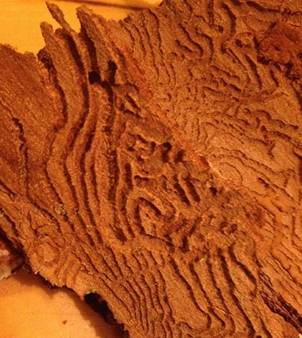

... multiplicities can become symbolic in order to explore the entanglements of one multiplicity to another and not limited to only two multiplies......
A multiplicity is continually transforming itself into a string of other multiplicities according to its thresholds and doors. ....the multiplicity toward which it leans, stretching to the breaking point, is the continuation of another multiplicity that works it and strains it from the inside. In fact the self is only a threshold, a door, a becoming between two multiplicities... (Deleuze & Guattari, 1987, p. 275).
a labyrinth of creation and transformation where the labyrinth is what leads to becoming.... is that of the labyrinth itself ☺ (Deleuze, 1983/1989, p. 188).
I wander in a labyrinth of sensing – my organs – my bodying ...and organizes as if becoming horse ..... is in the multiplicities...

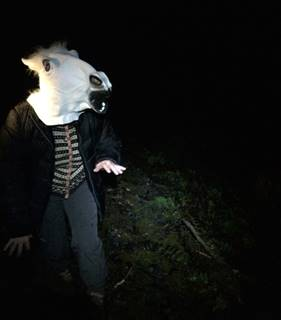
The treads of the labyrinth is a link to the event to come....the labyrinth of the event.
Life itself is not an escape – not a lost way, which is, which was, which will be (Deleuze, 1983/1989, p. 188)
...affirming the event is affirming becoming...
Dionysus not only asks Ariadne to hear but to affirm affirmation.... 'you have little ears, you have my ears: put a shrewd word there'
The ear is labyrinthine, the ear is the labyrinth of becoming or the maze of affirmation.
The Labyrinth is what leads us to being, the only being is that of becoming, the only being is that of the labyrinth itself.
But Ariadne has Dionysus ears: affirmation must itself be affirmed so that it can be the affirmation of being. Ariadne puts shrewd word into Dionysian' ear.
That is to say: having Dionysian affirmation, she makes the object of a second affirmation heard by Dionysus (Deleuze, 1986, p. 178)
a different forest universities of becoming
Hapticality, the touch of the ground, the interiority of sentiment, and the sensation that what is to come is here. Hapticality, the possibility to bodily affirm that distributions is not regulated, at least not successfully, by politics, a people, a piece of land, a symbol. Senses touches. Thrown together in labyrinths touching each other we were not denied all sentiment, not denied all the things that were supposed to produce sentiment, family, nation, language, religion, place, home. Though forced to touch and be touched to sense and become sensed in that forest space of darkness becoming (for) each other.
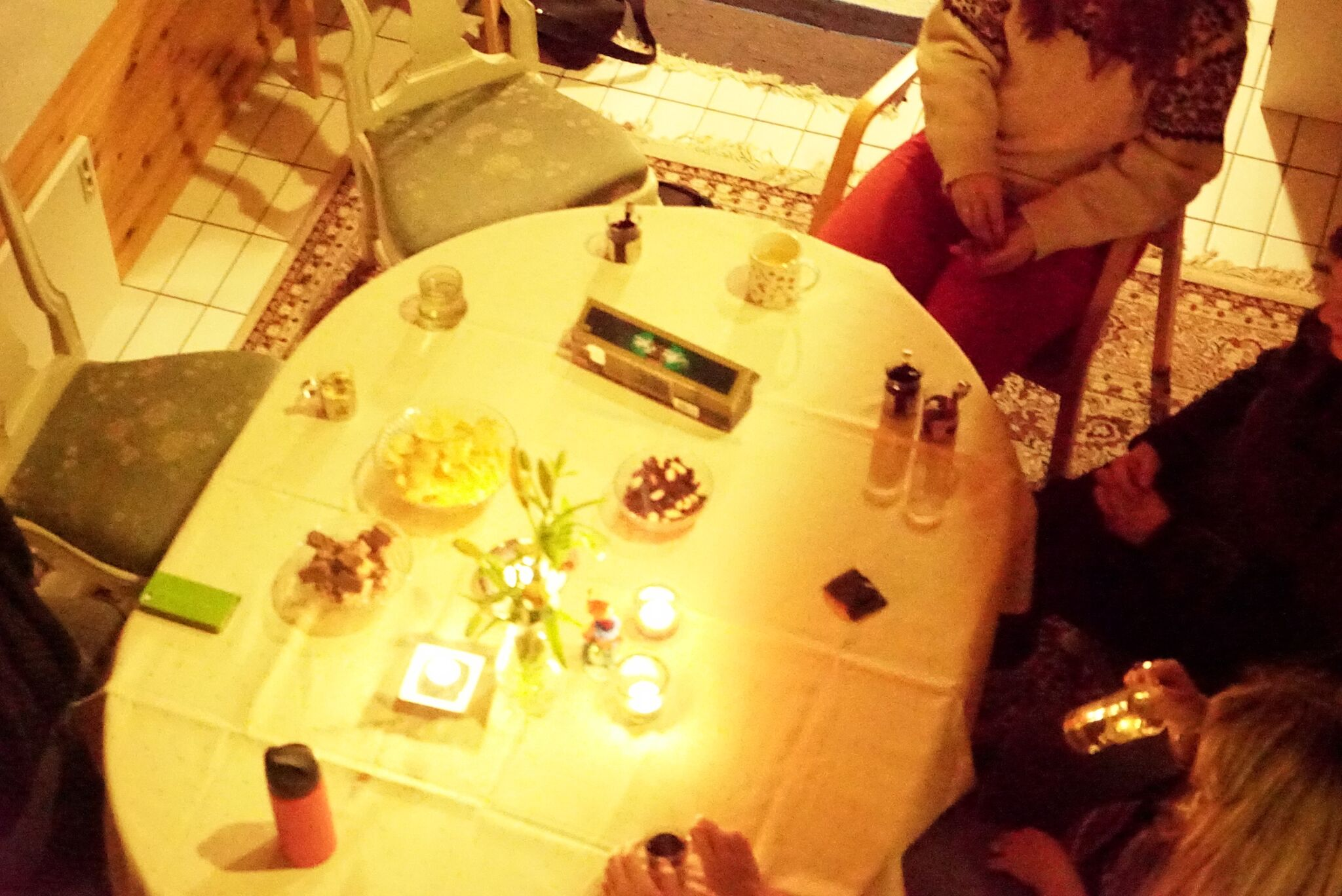
'Between power and knowledge there is a difference in nature or a heterogeneity; but there is also mutual presupposition and capture; and there is ultimately a primacy of the one over the other. First of all there is a difference in nature, since power does not pass through forms, but only through forces. Knowledge concerns formed matters (substances) and formalized functions, divided up segment by segment according to the two great formal conditions of seeing and speaking, light and language: it is therefore stratified, archivized, and endowed with a relatively rigid segmentarity. Power, on the other hand, is diagrammatic: it mobilizes non-stratified matter and functions, and unfolds with a very flexible segmentarity. In fact, it passes not so much through forms as through particular points which on each occasion mark the application of a force, the action or reaction of a force in relation to others, that is to say an affect like 'a state of power that is always local and unstable' (Deleuze, 1988, p. 73)".
As well as a multitude to come...
Ei pimeän tunnustelua

I who can see have my own depth also, being backed up by this same visible which I see and which, I know very well, closes in behind me. The thickness of the body, far from rivaling that of the world, is on the contrary the sole means I have to go unto the heart of the things, by making myself a world and by making them flesh (Merleau-Ponty 1968, 135).
Lying on my back on the fallen trunk and looking at the night sky. I see reddish light covering that sky, and I know through my experience that behind that red curtain, there is a starry sky, and I find myself dreaming about it. There is a disappointment of darkness which seemed to appear as a lightless. I drown between, into intermediate space, not knowing am I in the darkness or in the lightless. If the visible exists only with the seer, and the seer with the visible (Hotanen 2008, 85), then the reddish sky opens for my vision in my vision, and through my thoughts and speech I make that visible for me, in my body. I keep dreaming of the starry sky, which stays invisible. There I am, trapped, with the mist of a vision. I cannot see the sky nor darkness, I see reddish colour and lightless, or I sense them. The seeing and sensing are in the same world, now occupied into dark forest, in my embodied being, lying on the fallen trunk, dreaming.
steps
sounds
flashlights
I cannot transform myself to be the flashlight of a camera that grabs visions around or a moss I hear steps. I am moving without going and doing. I feel at once I am moving about myself and fully in myself as myself and mine not-self are as much being with a tree as the tree is being with me. I change my position without any particular meaning, just to avoid a discomfort of the rough surface of the trunk.
forest…
in the city
darkness ... matter?
Is darkness touchable? Can I take it to my arms and give a hug for it. Can I put it to the glass bowl and watch it through the microscope? And on the whole, do I even need to do so? Can I let it be? Darkness… dark… with little or no light… Darkness lives in light; it lives in stories and narratives… It lives in us. It lively lives in the invisible meanings of the visible. This invisible is not separated from visible; rather it can be reached as the invisible of the visible.
Whatever I imagine or I think of … I can’t avoid to be affected … as Brian Massumi writes:
When you affect something, you are at the same time opening yourself up to being affected in turn, and in slightly different way than you might have been the moment before. You have made a transition, however slight. You have stepped over the threshold (Zournazi 2002, 212).
I keep moving without really doing anything or going anywhere and still each single, slight or big movement in the body is a transition, is the step over the threshold. Because, just from the point my body is situated in, I can see the sky, the red curtain (that sees me from everywhere). Every single change in my posture changes the whole forest for me. And through these slight steps and moments, opens a protean world, where is no beginnings and endings, where a form “lives and breathes in the moving flow of its creation […], a flow experienced as an ongoing present, an unbroken now [...] that is, an ongoing flow of movement from an ever-changing kinetic world of possibilities” (Sheets-Johnstone 1999, p. 485). Massumi writes with Mary Zournazi: “[...] affect is thinking, bodily - consciously but vaguely, in the sense that is not yet thought. It is movement of thought or a thinking movement” (Zournazi 2002, 217). I am in the world of possibilities…
… lightless. … we need to imagine… in relation to an unsteady landscape… vivid methods and approaches to inhabit … in darkness
Every evening the lightless less-of-light comes
Lightless is never lightless, it’s just less
This night this evening the darkness makes me dark
Tired and dark
This unsteady landscape, this unsteady life and world of lights and shadows
Vivid methods yes
We need to imagine
We need to
While the force and majesty of light is
engaged and appreciated widely in the disparate fields of science, philosophy,
art, and religion, darkness is commonly overlooked, undervalued, or
even maligned. (Macauley 2009, 53.)
We search for light
We search for enlightenment
What if I write with white, with light and see only later, what I’ve written
Does it appear here later, when I color the lines with black
Before doing that I already see I’ve been making mistakes,
Computer can recognize the words
White on white
Now I continue with black on black
Black on black
How could text in an article be(come) collaboratively editable?
And now I have to think about this writing process.. I was not able to come to Nokia and now after that this writing continues with(out) the connection to others, connection that is there but not here, connection with an absence. I would love to have you there, here, I would love to see your voices, I would need your voices, your words, your thoughts..
Writing in this dark and closed space feels uncomfortable to me, as I’ve just learned to love writing collaboratively, writing with and between the others, writing with and between the others and affects, percepts here and there… Now I just feel alone and put in a small box – it’s me and my computer – and though it never is just me and my computer…
But dark is never dark
Closed is never closed
You are there, I see you writing
There
There There
There
There
There There
Those dark and hidden spaces unfold a bit later
But they never unfold
The words are tiny pieces of the affects and percepts, of those happening and happened in those moments of writing
While the force and majesty of light is
engaged and appreciated widely in the disparate fields of science, philosophy,
art, and religion, darkness is commonly overlooked, undervalued, or
even maligned. (Macauley 2009, 53.)
What can become possible in these spaces of darkness(es)?
Darkness, folded and hidden space of writing,
The way we many times write anyway..
Writing an article until someone reads it, comments it, takes it, or throws it away..
What can become possible in these spaces?
Getting stuck
Writing in darkness and hiddenness
Writing with knowing that later there’ll be a time when this can be read
A time, when these words unfold and become something else
I need you I need you I need you
I don’t need light
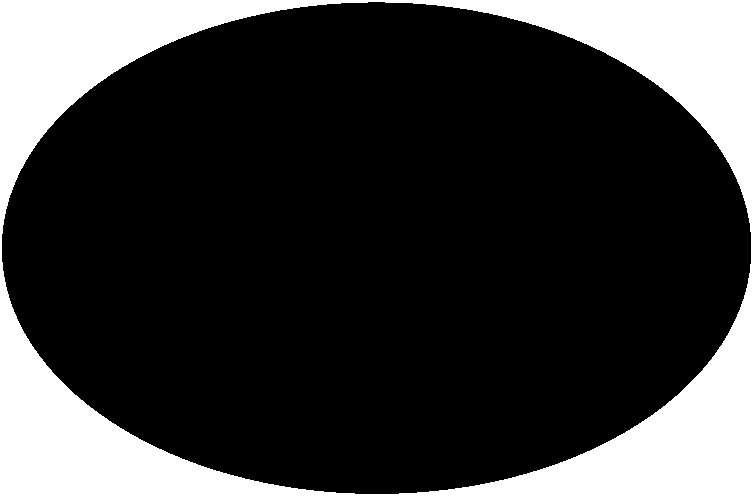
Where are you?
Could you plee send me some Where are you?
Could you please send me some thoughts...
You’re there I know, writing and waiting for others’ writings
Collaborative and not
Searching you, the haunting partners
Searching and fumbling
… lightless. … we need to imagine… in relation to an unsteady landscape… vivid methods and approaches to inhabit … in darkness
We need to imagine
In relation to an unsteady landscape
In relation to an unsteady methodology
In relation to an unknown space
I need to imagine and send a thought
Vivid methods

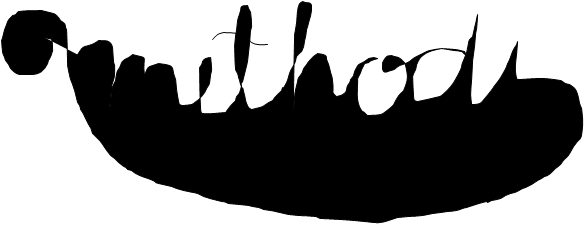
Kullalla koristellusta lakkatyöstä
Talking about zoos as places where humans go to look at other beings without being seen themselves (because the animals in cages are too habituated to crowds, and too marginalised to be able to return a look, to see us) John Berger (2009) asks us to consider the event of being looked at, being seen, rather than obsessing over our own ability to see. This, he argues, will yield much needed perspective into ourselves: our positionality and our possibilities of being the kind of beings and individuals we are. In short: seeing and being seen produce knowledge of different things. As do all of the four possible combinations:
seeing and being seen / seeing and not being seen
not seeing and being seen / not seeing and not being seen
These degrees and positions of relational blindness are intriguing when discussed in connection with research practices: that is, methodologically. Instead of focusing on the researcher's gaze as is usual in qualitative research, we might want to ask What does being seen do to us as researchers? Being seen by children in particular. As researchers concerned with presence: What do the various degrees and positions of relational blindness produce in our research?
seeing and not being seen
Tracing the design and social life of cities Richard Sennett (1990) writes about a fear of exposure that he understands to have developed as part of the religious history of Christianity. A fear of being seen, but a wish to see nevertheless has fuelled the creation of spaces in our societies in which we are able to see, to gaze, but can remain invisible as individuals. Sennett locates these places in densely populated urban settings as bland, neutralising spaces in which people's differences dissolve. Shopping malls host displays of materials and of people, yet offer a refuge of blending in as a neutral, generalised customer individual with no real visibility as a person.
Methodologically this first position can be taken as the most traditional one. Researchers have for long relied both on their explicit ability to look/see (to gaze) and simultaneously on their own invisibility, rendering the objectivity of research to correlate with the degree of influence (visibility) by an individual researcher.
not seeing and being seen
The second position is familiar at least from Bentham's (1789) design and Foucault's (1977) discussion of the Panopticon: an arcithectural device in which an individual was seen (or believed that he/she was being seen, or the inability to know for sure whether one is seen or not) but remaining blind in that the source of the gaze one is subjected to is never visible. Ideas of 'surveillance' in general entail this visual bias of being seen but not seeing. In the dystopia by George Orwell in 1984 an ubiquitous, yet itself a somewhat invisible character, the Big Brother, is used as a symbol for (state) surveillance in which you are being watched but you don't know when, how, and by whom.
Methodologically the idea that the researcher could remain an invisible Big Brother, begun to be bothered as qualitative research methodologies were established in the 1990s. The researcher was considered an active participant as well as an observer but the degrees of participation versus observing varied greatly (e.g., Schwartzman 1993). Not only unable to avoid being seen, it was eventually deemed that a researcher has to be seen to be able to do her job; that the researcher is her main methodological tool. To the extent that qualitative research has become almost synonymous with autoethnography. And so, brutally simplifying and provocating, research became about being seen as a researcher/individual, but not necessarily seeing much of other individuals when too busy reflecting one's own position.
not seeing and not being seen / seeing and being seen
Both cases – seeing and being seen, not seeing and not being seen – are without clear visually based tresholds. They are visually non-binary possibilities: there's no lopsidedness but either seeing/visibility or not seeing/invisibility of pretty much everyone and everything involved. As such these positions might dissolve the possibility for us to lean back to patterns of thinking and perceiving which follow the christian-psychological logic of an 'inside and outside', of a 'true self', a 'mind' and outside reality, body or 'nature' (Sennett 1990, 10-31).
Post-structural research, methodologically especially the post-qualitative or post-methodological attempts have focused on the former of the two positions: seeing and being seen, endlessly producing newer ways of seeing and perceiving – that is: proliferating the creating of life and societies as we go. Not as common is the discussion about not seeing and not being seen. Perhaps because partial or complete invisibility or blindness seems at odds with social scientific research – other than as a topic. Yet it is possible.
Bidisha Banerjee and Mindy Blaise did it with considering air as an invisible nonhuman research participant (Banerjee & Blaise 2013). Nick Lee (2008) argued convincingly that a sleeping person can be an agentive research participant. John Law (2003) references David Appelbaum's (1995) book in explaining how, methodologically speaking, blindness does not indicate a loss rather than a range of different sensitivities and sensibilities (Law 2003, 10). He goes on to note that blindness "erodes the idea that by taking in the distance at a glance we can get an overview of a single reality" (2003,10).
Hannah Arendt (1978, 122) accredits Henri Bergson as the first modern philosopher to dispute the nobility of sight. The development of Western philosophy, According to Martin Jay (1993, 186-187) relies on dependence on visual metaphors: from the shadows in Plato's cave, Augustine's divine light, to Descarte's ideas available to 'mental gaze' and the enlightenment's faith to the data of our senses. So the ocularcentric underpinning of our philosophical tradition was undeniably pervasive until the 20th century. Perspective was held as atemporal, decorporealised and transencental: same to all. Until Bergson and Nietzche came along with their fundamental critiques of oculocentrism: of the doctrine of 'immaculate perception' (Nietzsche 1961, 149), and pointed out that every viewpoint is value-laden, never detached.
Bergson distinguishes between 'imagination or intuition' and 'visual imagination'. Imagination or intuition is non-visual perception, embracing duration and continuity; as opposed to visual imagination which is a visual habit of dividing up the duration and continuity of events/life into separate things.
"Imagination […] signifies the absolute knowledge of a thing, which Bergson describes as an absolute coincidence with the thing's duration. Generally speaking, perception results from the difference between our duration and the durations of other things: we are able to perceive a table as a solid object only because our memory condenses the vibrations that make up that table into a manageable, solid thing." (Trifonova, 2003, 86)
What Bergson calls 'memory' is a non-visual creative force: "the negation of the given, of the present in favor of spontaneous, free creation" (Trifonova, 2003, 83). Literally speaking, when you don't see you have to imagine. Two options then become available when thinking (in a very simplified manner) with Bergson: you image visually or you imagine intuitively. The former is the path well trodden in qualitative methodology: you produce serieses of multi-modal representations, aiming for identification and recognition. The darkness propels a need to replace it with light, a need to see. The intuitive path is rather about duration: of living and breathing creatively with the darkness, of responding to it rather than representing it. But this is the path less traveled in qualitative inquiry: it's what Tim Ingold for one calls 'intellectual craftsmanship' (Ingold 2011, 240) and the path that (con)fuses theory, practice, intuition, knowledge, fact and fiction – all the while remaining something identifiable as 'research' in the end.
Through Bergson's influence on imagist poetry of the modernist movement (e.g., William Carlos Williams) we see clearly this move away from mimetic representation and toward the immediate presentation or evocation of lived experience through the arresting juxtaposition of verbal images. Stuart Aitken's 'ethnopoetics' (Aitken 2014) or Tim Ingold's 'Intellectual craftsmanship' ring many bells here. "No image can replace the intuition of duration, but many diverse images, borrowed from very different orders of things, may, by the convergence of their action, direct consciousness to the point where there is a certain intuitition to be seized". (Bergson 1947, 167)
* * *
Kullalla koristeltua lakkatyötä ei pitäisi nähdä kirkkaassa valossa, eikä katsoa yhdella silmäyksellä, vaan se tulisi jättää hämärään, heikon valon poimiessa esiin osan sieltä ja osan täältä. Työn koristeelliset ja runsaat kuviot katoavat lähes kokonaan pimeyteen, taikoen tilalleen sanoinkuvaamattomia värähtelyjä. Yössä esille asetetun lakan hehku heijastaa aaltoilevan kynttilänvalon, ilmaisten ilmavirrat, jotka aika ajoin löytävät tiensä hiljaiseen huoneeseen, ja houkuttelee ihmisen unelmoimaan. Jos lakka viedään pois, katoaa paljon tuon oudon kunttilänvalon ja lyhdyn tuomasta haavemaailmasta, tuosta aaltoilevasta, yön sydämen tahtiin lyövästä valosta. Niinkuin pienet joet juoksisivat tatamin yli keräten pieniä lammikoita sinne tänne, samoin hivelee hento, miltei huomaamaton ja epäröivä valo lakkakuvion yön pintaan. (Tanizaki, 1933/1997, 30-31.)
Seavdnjadis ja čáhppes idja
Mu váimmus
Niegadan ja sávan
Light and the lit object create and highlight each other. Take a lacquered and gilded decorative woodwork. It requires just the right kind of light to be seen in all its subtle glory, layers of varnish and gold each individually discernible as three-dimensional and as if moving, silently waving. The light required is not daylight nor a bright lightbulb but flickering and dim candlelight. Responding to whiffs of air, drafts or breath, candlelight is not stable but in constant movement. The movement of the light brings the lacquered piece alive and in turn the three-dimensionally glowing piece gives away the movement of the candlelight, otherwise too subtle and vague for the human eye to catch. Bring the lacquered piece into bright sunlight and you have a flat-coloured rather than exquisitely layered object. Bring a blue plastic plate to candlelight and you have an insufficiently dim light rather than the kind of light that brings life to a surface.
The kind of knowledge produced is relative to both the object and the light – both the phenomenon under study and the conditions in which we do our work. Different combinations produce different knowledge and contest other kinds of knowledge.
ECHOES FROM THE FOREST
A sort of response
Here is a (sort of) response to the special issue including all the created material. Here trying to think with the material and the experiment and experience through the proposed question:
“How does our experiment (forest, writing, pieces -productions…) reconceptualize research practices?”
Through the question the thinking moves beyond the material and the experiment towards thinking methodologies that we use in creating knowledge (knowing or understanding) or making sense of the world through diverse research practices.
The practices are created.
They are created as proposals for ensuring valid and trustworthy knowledge. Knowledge that might able people to have (more/diverse) opportunities for acting and be(com)ing in the world or within the world with human and non-human others.
The created research practices are situated in particular contexts, such as quantitative, qualitative, and post-qualitative (and more) methodologies.
They are created to (better) produce knowledge(s), knowing(s) and understanding(s), about diverse research topics.
They are supposed to tackle research questions or concerns in a systematic way, in a way, that is transparent, open and visible to others.
Methodologies are named, and by the naming specific features are understood as being part of the research approaches.
But what if these research practices, approaches and/or methodologies are apparatuses that shed light (only) to specific questions or in a specific way.
These apparatuses cut the world with their specific tools. Or as Karen Barad (2014, p. 180) notes “The apparatus is an inseparable part of the observed phenomenon.“
They create knowledge and shed light (only) in a pre-existing manner.
The apparatuses colonize the world through, for example, existing lenses.
What if there were no pre-existing lenses with which to shed light (on the world)?
What if research practices took “seeing” without lenses (blurry, not visible) and/or darkness(es) seriously in research processes?
What might we find/see/sense in the fringes of light, in the shadows?
Or indeed as Kared Barad (again) writes:
“Bands of light appear inside the shadow region – the region of would-be total darkness; and bands of darkness appear outside the shadow region. There is no sharp boundary separating the light from the darkness: light appears within the darkness within the light within . . .” (Barad, 2014, p. 170).
And continues:
“[…] darkness is not a lack. Darkness can be produced by ‘adding new light’ to existing light – ‘to that which it has already received’. Darkness is not mere absence, but rather an abundance. Indeed, darkness is not light’s expelled other, for it haunts its own interior. Diffraction queers binaries and calls out for a rethinking of the notions of identity and difference” (Barad, 2014, p. 171).
What if each research project, question or concern created its own apparatuses, or even, what if apparatuses emerged in encounters as diffractive patterns?
Diffractive patterns in research practices might queer binaries or (pre)existing apparatuses.
What might scholarship look like in the absence of clear views, without a need to signify and identify, or to declare strange only in the relation to the familiar?
Fluid? Collective? Material? Visual? With and without images? With and without meanings? Collective gatherings? Sensing without senses? Knowings without subjectifications? Sensing without an object?
What could be accomplished through uncomfortable knowing in strange contexts? What happens when the very idea is a multiplicity?
This kind of research practice is impossible to conceptualize and verbalize. Scholars might be faced with darkness. Or soulbodies. Maybe methodologies of strangeness. Maybe fluid methodologies, bird methodologies, grass methodologies, rock methodologies. Spoken, silent, performed, lived experiences of darkness and shadows and living without.
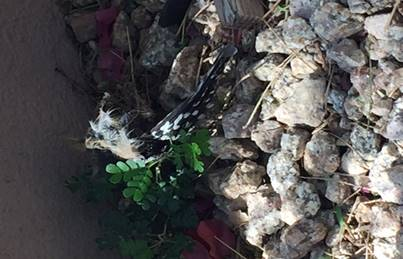
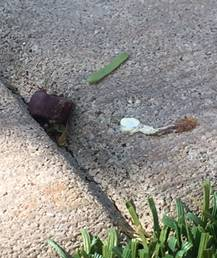
Shadows and holes can take over and become a temporary point of contact in the darkness. Shadows are hosts for lightness and lightness forms the shapes of darkness. Or maybe similarly to Sorensen (2008) who views shadows as holes in light. Cracks, black spots, invisibility are limit spaces for lightness. Through negatives and absences on might sense the presence. Negative ontology produces visual infinity. Subjects and objects merge in contact and transform in their oneness since their boundaries are no longer recognizable. One and many unites through doing and by acting. Light illuminates and generates shadows. Methods both illuminate and generate shadows.
Seeing methods and being seen thought the methods / seeing and not being seen by the methods
not seeing the method and being seen by other methods/ not seeing any method and not being seen methodologically
in the light of the method and in the darkness of methods
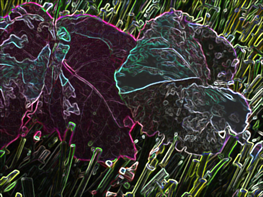
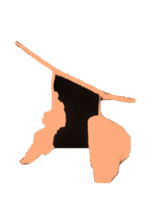

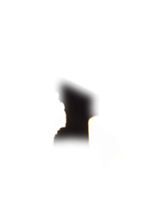
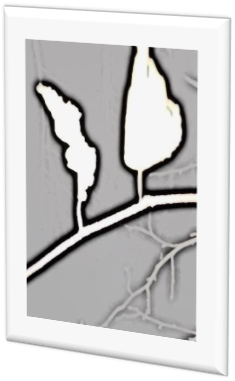
Methods multiply. Nothing moves but everything changes methodologically.
Sometimes soulbodies follow the methodological holes in the thickness of philosophical thought and they emulate the analysis of their times. Placeful beginnings, slow beginnings, calm beginnings- methodologically and through a frame.
It is closely impossible to think about darkness in the full bright sunlight. Darkness is only present through various layers of light and shades of shadows. Can one smell shadows and darkness? Can on smell methodology? Shadow methodology. Various shades of light and random beams of light stimulate curiosity and produce unexpected connections. Shadow methodologies are not representations but parts of the real and active grass, fence, and fruit agent –parts of living matter.
Shadow methodologies produce only distorted copies of the original. They are perspectival due to the movement of the light source and sun. Shadow methodologies are attached to their host (that creates the shadow) and other objects surrounding the host and they are dependable of their source (sun). Shadow methodologies produce layered shadows, tiered representations of the absent form (data). In shadow methodologies only edges are visible and recognizable- content can be filled in, imagined, and erased if needed. Do some or any methodologies catch their shadows?
There is no sunshine when she is gone.
Subverted and shady methodologies. Method.olog.ies under suspicion and in the shade.
Shadow theater. Colorful shadow theater. Methodological theater to be filled in.
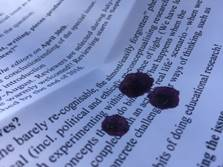
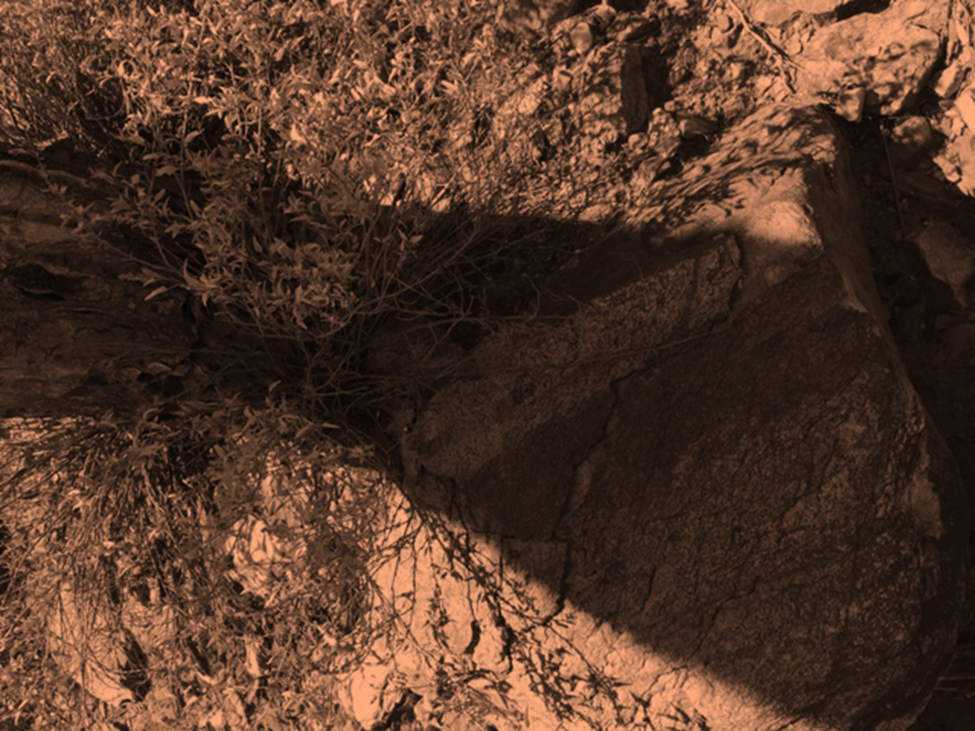
THE CONCEPTUAL-METHODOLOGICAL FOREST (HOW DOES THIS ‘MATTER’?)
The collective ideas that arise from all the pieces and various compositions in this special issue highlight affects and concepts that tackle interdependency and the more-than-individual. These include the initial bodily-cognitive-existential actualizations in the dark mossy forest when we felt that our ‘selves’ kept bleeding over our preconceived borders, dissolving or wavering as uncertain, collapsing into surrounding elements and other selves. But also the conceptual workings of these actualizations, into ‘soulbodies’, ‘one-as-many’, or ‘nomadic objects’ all aiming at knowing without domination. Knowing with categories that are always bleeding and uncertain. Locating the knowers as more-than-individual, as entangled compositions.
Collectively addressed are also the realizations of the power of one sense - vision - in conducting research, in creating knowledge, in producing reality. Vision is heralded to do methodology, even to be methodology. Vision and light (ability to see) seem to be the norm for knowledge production. Just think about the place of observations in mainstream educational research, or how often many of us habitually write or say: “When we look at…”, or “These perspectives…”, or “In the light of…” when presenting research. A critique of the power of vision rarely transverses disability studies and it took a deliberate walk, and activities in a dark forest, for us visually unimpaired, to be able to reach and concretely feel the weight of this one sense in research. When omitted, light or the ability to see showed in glaring conviction how our customs and habits of doing research (even critical, post-minded and feminist) were thoroughly dependent on this one sense. We began to feel the importance of deliberately crafting new habits. Of forcing ourselves to do research differently than we had before.
As human beings we inhabit a material world. We see it, hear it, touch it, smell it and travel in it. When in the dark we depend on our other senses: We seek refuge in hearing, touching and smelling, we seek anything we can grab onto, lean against or sit on. Our existence becomes alerted, subtle and aware, our voices become low and movements slow and deliberate. Methodology of darkness appears as if contrasting to the methodology that works in daylight. Darkness becomes a light and a means of seeing, yet capable of generating wholly different experiences. Darkness generates light as gradations of itself and seeing as imagining.
In the social scientific practices of making sense of the world Barad (2003, p. 801-803) tells us it is time to move beyond the anthropocenic landscapes where matter and mattering have less power than words and language in the world of the social and cultural. This brings attention to non-human matters and matterings; and their affect on us, and our affect on them. This is not to consider words and language as insignificant. Rather, it is to move from meaning and language centred significations to significance and affirmative sustainable ethics of one’s own conducts and life. This is done through giving matter at least the same value that is given for the transcend productions of it as language. (Barad 2007; Braidotti, 2006; Deleuze and Guattari 1994.) This is to follow Deleuze and Guattari’s philosophy of concepts as they employ Spinoza’s practical approach, in which philosophy is not transcendent and abstract, on the contrary, philosophy is the creative and the experimental operating to generating new. Deleuze writes according to Spinoza “there is no longer any difference between the concept and life”, “both elasticity of the concept and fluidity of the milieu are needed” as he engages with Spinoza’s ontology of naturalistic ethics away from the epistemologically centred philosophy (Deleuze 1988, p. 130). Therefore, the focus here moves from viewing discursive and material worlds in opposition towards envisioning them as produced by one another. This co-production becomes clear in the dark forest experiment where it is possible to be continuously and endlessly enlivened through various written, voiced and (photo)depicted expressions of the events and the encounters occurring in the nocturnal forest by the reader/viewer/listener (Davies and Gannon 2012). These expressions are produced again through the possible (re)productive movement of the reader/viewer/listener’s processes of (memorizing) the nightforest and its events.
Within Deleuze and Guattari’s thinking, ‘language’ and concepts are not independent tools enabling meanings as closed legitimated systems of thought to be conveyed. Rather, they are relational and made by situated mental, social and nature apparatuses. Therefore, each concept is always encountering the affect in the movement from perception to percept (Deleuze and Guattari, 1994; Guattari 1985; Deleuze, 1988; 1995; see also Massumi, 2015). This relationality brings in the ethics of experiment and the attempt here to express the mattering of darkness as it is felt, sensed and heard in a Novembery Finnish forest at night. This collectively shared (and produced) temporality and milieu creates understandings of darkness that reach beyond common understandings. The absence of light and all that is seen is usuallysymbolizing as the opposite of enlightened and rational humanist ways of knowing and being. However, as Barad elaborates:
Darkness is not mere absence, but rather an abundance. Indeed, darkness is not light’s expelled other, for it haunts its own interior. Diffraction queers binaries and calls out for a rethinking of the notions of identity and difference” (2014, p. 171).
In this experiment darkness brings in the ethics of difference compelling the experiment to express and articulate the mattering of darkness and its power through our senses while not perceiving darkness as monstrous or as otherness in its difference as Rosi Braidotti (1996, p. 135) elaborates on monstrousness as difference as follows:
Being figures of complexity, monsters lend themselves to a layering of discourses and also to a play of the imagination which defies rationalistic reductions… …The simultaneity of potentially contradictory discourses about monsters is significant; it is also quite fitting because to be significant and to signify potentially contradictory meanings is precisely what the monster is supposed to do.
Further:
As a signpost, the monster helps more than the interaction of heaven and earth. It also governs the production of differences here and now… …This includes the organic (sexual difference, nature, race) and inorganic (machinic or technological body double) other… …The peculiarity of the organic monster is that s/he is both Same and Other. The monster is neither a total stranger nor completely familiar; s/he exists in an in-between zone (1996, p. 141)
Instead, darkness is considered abundant and filled with forces that cannot be quantified or arranged but felt and sensed. Therefore, darkness functions here as the ethics in teaching us how to engage into something, become and become otherwise with something, which might not seem familiar or might not be easily and instantly approachable. This experiment produces knowledge differently for us through situated and created practices, making the not-seeing and blurry sense-lenses of the darkness practice accurate for queering our expectations of the binaries of science and shaking what we have learnt as the traditions of qualitative methodology.
The matter, the dark forest and its inhabitants, is perceived through our senses, and the matter and the produced sensations now take the lead and they no longer serve as the tools for ideas to materialize, instead, they are the narrators, ‘who’ employ us and our language, words and writing to make this production explicit and known outside the emerging event and encounter of nature. This is, as Deleuze insists with Spinoza, that both a philosophical comprehension produced by concepts and non-philosophical comprehension in terms of affects and percepts are needed, because: ‘the kinds of knowledge are modes of existence, because knowing embraces the types of consciousness and the types of affects that corresponds to it, so that the whole capacity of being affected is filled’ (Deleuze 1988, p. 82). In other words, this engagement with darkness embraces the importance of knowledge production within methodologies, in which both kinds of knowledges: the philosophical and sensory, are considered not as separate but as entangled. Difference is perceived as productive, and as the means to disturb normative understandings of ‘truth’ and legitimate knowledge by offering alternative ways of producing scientific knowledge on nature and on our ways of constituting various understandings of it.
As much as we wanted to break free, we have worked mostly within binaries of darkness and light. And with senses as separate individuated perceptions as collectively understood throughout the experiment. We have strived towards recognizing and conveying these binaries and individuations as necessarily entangled, but this is an ongoing project. As we talk about darkness we talk about light, when we talk about perceptions they are always inevitably both collective and singular productions. And always with ourselves as part of the phenomena (Barad 2007, p. 56):
Experimenting and theorizing are dynamic practices that play a constitutive role in the production of objects and subjects and matter and meaning. …theorizing and experimenting are not about intervening (from outside), but about intra-acting from within, and as a part of, the phenomena produced.
Acknowledgements
We (guest editors) would like to thank our reviewers for their valuable questions and advice on the editing of the publication and the technical assistant group for their work. We also thank all the participants for their contribution, including Riikka Hohti who attended the workshop but could not be part of the special issue. Thanks to Jayne Osgood for text editing work.
References
- Aitken, S. (2014). The ethnopoetics of space and transformation. Young people’s engagement, activism and aesthetics. Farnham: Ashgate.
- Appelbaum, D. (1995). The stop. New York: SUNY Press.
- Aranyosi, I. (2008). Seeing dark things. The philosophy of shadows. Australian Journal of Philosophy, 86(3), 513-515.
- Arendt, H. (1978). The life of the mind. New York: Harcourt.
- Banerjee, B., & Blaise, M. (2013). There’s something in the air: Becoming-with research practices. Cultural Studies <=> Critical Methodologies, 13(4), 240-245. https://doi.org/10.1177/1532708613487867
- Barad, K. (2012). On touching- the inhuman that I therefore am. A journal of feminist cultural studies, 23(3), 206-223. https://doi.org/10.1215/10407391-1892943
- Barad, K. (2008). Living in a posthuman material world: Lessons from Schrödingers cat. In A. Smelik & N. Lykke (Eds.), Bits of life: Feminism at the intersections of media, bioscience, and technology (pp. 165-176). Seattle: University of Washington Press.
- Barad, K. (2007). Meeting the universe halfway: Quantum physics and the entanglement of matter and meaning. Durham: Durham University Press. https://doi.org/10.1215/9780822388128
- Barad, K. (2014). Diffracting diffraction: Cutting together-apart. parallax, 20(3), 168-187. http://dx.doi.org/10.1080/13534645.2014.927623
- Bentham, J. (1988/1789) An introduction to the principles of morals and legislation. Prometheus Books.
- Berger, J. (2009/1980). Why look at animals? London: Penguin Books.
- Bergson, H. (1903/2007). An introduction to metaphysics. Mullarkey, J. & Kolkman, M. (eds. 2007), New York: Palgrave McMillan.
- Beston, H. (2003). The outermost house. A year of life on the Great beach of Cape Cod. New York: Henry Holt and Company.
- Braidotti, R. (1996). Signs of wonder and traces of doubt: On teratology and embodied differences. In N. Lykke & R. Braidotti (Ed.), Between monsters, goddesses and cyborgs: Feminist confrontations with science, medicine and cyberspace (pp. 135-152). London: Zed Books.
- Deleuze, G. (1994). Difference and repetition. (P. Patton, Trans.) New York: Columbia University Press.
- Deleuze, G. (1990). The logic of sense (M. Lester, Trans.). New York: Columbia University Press.
- Deleuze, G. (1988). Spinoza: Practical Philosophy. (Robert Hurley, Trans) San Fransisco: City Lights Books.
- Deleuze, G. (1986). Nietzsche and philosophy (H. Tomlinson, Trans. 2002 ed.). London: Continuum (Originally published as Nietzsche et la philosophie, 1962).
- Deleuze, G. (1983/1989). Cinema 2: The Time Image. Trans. Hugh Tomlinson and Robert Galeta. Minneapolis: University of Minnesota Press.
- Deleuze, G., & Guattari, F. (1994). What is philosophy? (G. Burchell & H. Tomlinson, Trans.). London: Verso (Originally published as Qu'est-ce que la philosophie?, 1991).
- Deleuze, G. (1995). Negotiations 1972-1990 (M. Joughin, Trans.). New York: Colombia University Press (Opprinnelig utgitt som Pourparlers, 1990).
- Deleuze, G., & Guattari, F. (1987). A thousand plateaus: Capitalism and schizophrenia (B. Massumi, Trans. 2004 ed.). London: Continuum (Originally published as Milles Plateaux, volume 2 Capitalisme et Schizophénie, 1980).
- Dillard, C. (2000). The substance of things hoped for, the evidence of things not seen: Examining an endarkened feminist epistemology in educational research and leadership. Qualitative Studies in Education, 13(6), 661-681. https://doi.org/10.1080/09518390050211565
- Draper, R., & Knott, L. (2016). Labyrinthitis. Retrieved from http://patient.info/doctor/labyrinthitis
- Ettinger, B.L. (2005). ‘Copoiesis’, framework X ephemera 5(X): 703–713. Available at: http://www.ephemerajournal.org/sites/default/files/5-Xettinger.pdf
- Ettinger, B.L. (2006). The Matrixial Borderspace. (Essays from 1994–1999). Minneapolis: University of Minnesota Press.
- Foucault, M. (1977) Discipline and punish: The birth of the prison. London: Vintage books.
- Greenhough, B., & Roe, E. (2010). From ethical principles to response-able practice. Environment and Planning D: Society and Space, 28, 43-45. https://doi.org/10.1068/d2706wse
- Grosz, E. (2005). Bergson, Deleuze and the becoming of unbecoming. parallax, 11(2), 4-13. https://doi.org/10.1080/13534640500058434
- Haraway, D.J. (1994). ‘A Game of Cat’s Cradle: Science Studies, Feminist Theory, Cultural Studies’, Configurations 2(1), 59-71. https://doi.org/10.1353/con.1994.0009
- Haraway, D.J. (2002). The persistence of vision. In N. Mirzoeff (Ed.), The visual culture reader (pp. 677-684). London: Routledge.
- Haraway, D.J. (2004a). The Promises of Monsters: a Regenerative politics for inappropriate/d others in D. J. Haraway (Ed.) The Haraway Reader. (pp. 63-124). London: Routledge.
- Haraway, D.J. (2004b). Cyborgs, Coyotes and `Dogs: A Kinship of Feminist Figurations. in D.J.Haraway (Ed). The Haraway Reader. (pp. 321-342). London: Routledge.
- Haraway, D.J. (2008). When Species Meet. Minneapolis: University of Minnesota Press.
- Haraway, D.J. (2008) 'Otherworldly Conversations, Terran Topics, Local Terms' in S. Alaimo, S. & S. Hekman (Eds) Material Feminisms. (pp. 157-187). Indiana: University Press.
- Haraway, D. (2012). Awash in urine: DES and premarin(r) in multispieces response-ability. Women's Studies Quarterly, 40(1 & 2), 301-316. https://doi.org/10.1353/wsq.2012.0005
- Harper, D. (2016). Labyrinth. Online etymology dictionary. Retrieved from http://www.etymonline.com/index.php?term=labyrinth
- Higgins, C. (2007). Interlude: Reflections on a line from Dewey. In Bresler, L. (ed.) International handbook of research in arts education. (pp. 389-394). Dordrecht: Springer. https://doi.org/10.1007/978-1-4020-3052-9_23
- Hotanen, J. (2008). Lihan laskos: Merleau-Pontyn luonnos uudesta ontologiasta. Helsinki: Tutkijaliitto, Episteme-sarja.
- Hultman, K., & Lenz-Taguchi, H. (2010). Challenging anthropocentric analysis of visual data: a relational materialist methodological approach to educational research. International Journal of Qualitative Studies in Education, 23(5), 525–542. https://doi.org/10.1080/09518398.2010.500628
- Ingold, T. (2011). Being alive: Essays on movement, knowledge, and description. Abingdon: Routledge.
- Jay, M. (1993). Downcast Eyes. The denigration of vision in 20th century French thought. Berkeley: University of California Press.
- Kleinberg-Levin, D. M. (1988). The opening of vision: nihilism and the postmodern situation (Vol. 1). New York: Routledge.
- Koro-Ljungberg, M. (2016). Reconceptualizing qualitative research: Methodologies without methodology. Los Angeles: SAGE.
- Kundera, M. (1983). Naurun ja unohduksen kirja (K. Siraste, Trans.). Helsinki: Werner Söderström Osakeyhtiö.
- Laruelle, F. (2013). Dictionary of non-philosophy (T. Adkins, Trans.). Minneapolis: Univocal.
- Law, J. (2004). After method. Mess in social science research. London: Routledge.
- Lee, N. (2008). Awake, asleep, adult, child: An a-humanist account of persons. Body Society, 14(4), 57-74. https://doi.org/10.1177/1357034X08096895
- Macauley, D. (2009). Night and shadows. Environment, Space, Place, 1/2, 51-76. https://doi.org/10.7761/ESP.1.2.51
- Manning, E. (unpublished). Me Lo Dijo Un Pajarito - Neurodiversity, Black Life and the University As We Know It.
- Manning, E. (2013). Always more than one. Durham: Duke University Press.
- Marks, J. (1998). Gilles Deleuze: Vitalism and multiplicity. London: Pluto Press.
- Merleau-Ponty, M. (1968). The Visible and the Invisible: Followed by working notes. Evanston: Northwestern University Press.
- Mullarkey, J., & Smith, A. P. (2012). Introduction. The non-philosophical inversion: Laruelle's knowledge without domination. In J. Mullarkey & A. P. Smith (Eds.), Laruelle and non-philosophy (pp. 1-18). Edinburgh: Edinburgh University Press.
- Nietzsche, F. (1961). Thus spoke Zarathustra. London: Penguin.
- Saward, J. (2016). The centre of the Labyrinth. Retrieved from http://www.labyrinthos.net/
- Saward, J. (2016). The story of the labyrinth. Retrieved from http://www.labyrinthos.net/
- Schwartzman, H.B. (1993). Ethnography in organizations. Qualitative Research Methods Series 27. Thousand Oaks, CA: SAGE. https://doi.org/10.4135/9781412984119
- Sennett, R. (1990). The conscience of the eye: The design and social life of cities. New York: W.W. Norton & Co.
- Sheet-Johnstone, M. (2009). The primacy of movement. Amsterdam: John Benjamin Publishing Company.
- Sorensen, R. (2008). Seeing dark things. The philosophy of shadows. Oxford: Oxford University Press. https://doi.org/10.1093/acprof:oso/9780195326574.001.0001
- Thomas, D. (1933/1997). Light breaks where no sun shines. London: Everyman
- Trifonova, T. (2003). Matter-image or image-consciousness: Bergson contra Satre. Janus Head, 6(1), 80-114.
- Yourcenar, M. (1968). The Abyss: A novel: Noonday Press/Farrar.
- Zournazi, M. (2002). Hope: New philosophies for change. Annandale: Pluto Press Australia.